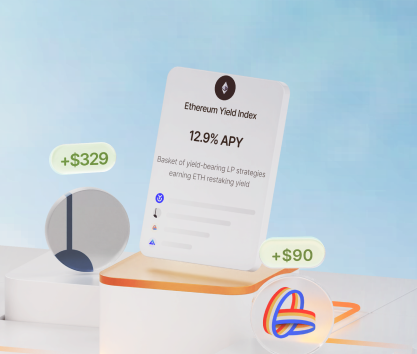Some of the finest crypto investments in the DeFi sector are those that generate passive income. The core difference between passive income and capital gains is that you can use earnings immediately to reinvest, create a new position in the market, or simply spend it on whatever you need at the moment. Capital gains are realized when you exit a position while passive income is available to you right after you receive a payment.
The DeFi ecosystem offers a wide range of options for passive income generation. Thanks to the flexibility of the sector with endless portfolio rebalancing opportunities and incredibly high interest rates, an investor can smart investments and harvest the fruit of their labor quickly. In this article, we will cover multiple ways to invest in the DeFi sector to build a consistent stream of passive income.
Building a source of crypto passive income
Decentralized protocols are offering services similar to what you can expect to find in the tradfi ecosystem. However, the core difference here is the non-custodial nature of many protocols that simply act as bridges between different systems and allow users to interact directly with each other or fully autonomous pools.
This setup removes the counterparty risk from the equation creating a balanced playing field where all participants trust the system and overheads are minimized thanks to the low level of involvement on the part of the provider. Investors face a set of new dangers in such environments. For instance, we are still dealing with smart contract risks as hacks and exploits are common in the DeFi sector often leading to massive losses.
Despite all the negatives, the DeFi sector is a great place to search for unique investment products capable of producing high returns.
Staking rewards on PoS networks
Ethereum was not the first to introduce the idea of Proof-of-Stake to the crypto community. However, it was the largest network to switch from PoW to PoS causing a massive wave of news stories and discussions. In a PoS system, the validation process is conducted by stakeholders. Since stakes are quite expensive, the risk of a 51% attack is very low although possible.
Multiple chains are offering rewards for staking to their users:
- Staking Ethereum as an individual running a masternode can be expensive since it costs 32 ETH (over $100,000 in November 2024). You can join a pool and still enjoy the benefits of staking. Yields vary but average returns are close to 4% APR.
- Solana staking is an interesting proposition for investors who are interested in working with a popular chain that does not put much effort into overseeing the ecosystem. Here, memecoins and other questionable projects thrive. With the annual inflation rate reaching 1.5%, even a 2% APR would be fine. However, you can earn up to 5.67% in 2024 with an expected increase to over 6% APR in 2025.
- Cardano is a network that regularly appears in various discussions in passionate crypto communities. Cryptocurrency returns on this chain are quite low and the development process seems to be stalling. However, it is still an interesting chain to focus on if you believe in the long-term prospects. Currently, Cardano staking yields roughly 1.8% annually.
Note that layer 1 staking is a more complicated venture than it seems. For instance, market volatility is still a big issue and must be accounted for. Ethereum experienced significant volatility in 2024 with prices dropping by 43% from March’s high. Despite recovering slightly and reaching $3,100 by November, some investors were deep in the red as their 4% gains were wiped out by the depreciation of the asset itself.
Yield generation or yield farming
An interesting way of making money in the DeFi ecosystem is by providing liquidity to protocols willing to reward contributions with native, governance, or layer 2 tokens. Yield farming can be incredibly profitable for investors who can time their exit well and do not succumb to greed or fear. Discipline and clear thinking are crucial for someone who wants to make money by farming yields on various decentralized protocols.
APY comparison of Dapps offering rewards in their tokens against typical pools does not favor the latter. In the vast majority of cases, a protocol that offers rewards will pay much higher rates as it can use its own tokens to offer generous rewards.
Below are several great projects in this category:
- Merkl is a long-standing protocol that operates across multiple chains. Depending on the market situation and some other circumstances, the protocol pays outrageous APYs to liquidity providers. For example, in November 2024, the TRKX-WETH pool on Polygon had a massive reward APY of over 648,698%. It was a very short event for a pool that needed an immediate influx of assets.
- Aerodrome on Base is the biggest DEX on this particular chain. AERO tokens can be used in a variety of ways. For example, different lock-up periods grant you perks depending on the length of locking. A 4-year period gives you 100% voting power and 100% of the revenue portion secured for the stake. Locking in 5,000 AERO gives you 5,000 votes. As of the time of writing, investing in the WETH-TRUF pool yields up to 370% in AERO rewards.
- Curve DEX is one of the long-standing Ethereum exchanges that offers a wide range of investment opportunities to users from all across the DeFi ecosystem. You can invest in all sorts of assets including stablecoins, layer 1 coins, and more. One of the best pools for high yields is ZUNUSD-CRVUSD with a 1,959% CRV reward APY. CRV and CVX tokens enjoy deep liquidity and can be easily traded on CEXes and DEXes alike.
One of the issues with the current landscape of the DEX sector is that regulatory compliance is still largely non-existent. It means that customers have additional freedoms and enhanced privacy while also experiencing constant anxiety due to the lack of legal protection from unforeseen risks like hacks, protocol collapses, or theft.
DeFi investments in lending protocols
Lending protocols are some of the best for conservative investors who want to stick to safer investment options and avoid the dangers of actively chasing the biggest number. Since all loans must be collateralized by at least 110%, all investments are protected and will be repaid one way or another. Low LTV numbers are justified as these protocols prioritize investor safety.
LTV is a metric that determines the ratio of borrowed assets to collateral. For instance, an LTV of 90% means that you can borrow exactly 90% of the principal currency value of the target asset. So, taking an ETH loan using 10,000 $USDT as collateral at 90% will allow you to take out only $9,000 worth of ETH. For investors focused on very strict risk management, this particular setup seems reliable despite low APYs.
Here are some lending protocols that you should check out:
- Spark on Ethereum and Gnosis is a good destination for investors interested in higher yields. The current TVL across all pools is $3,7 billion. With 21 pools averaging 2.06% APY, it is one of the most profitable lending platforms out there. For instance, Compound Finance has an average of just 1.53%. Staking WETH on Spark yields 2.35% which is great for people interested in liquid staking. Spark did not conduct an airdrop meaning that it may happen in the future.
- Aave is the biggest lending protocol in the whole DeFi sector. It has over $17.5 billion in TVL and offers a wide range of pools with 145 different options scattered across 13 chains. Here, you can invest in the USDT pool on Ethereum to earn up to 4.24% APY with a 30-day average in November 2024 reaching 4.95%. Aave is a highly reliable platform that has been around for quite a while now.
- Compound Finance is the oldest lending protocol with a massive user base and impressive numbers. As of the time of writing, the TVL was over $2.4 billion. The COMP token is trading at $48 with a $411 million market capitalization and over $60 million in 24-hour trading volume. The protocol offers 111 pools averaging 1.53% APY allowing for asset diversification and consistent payouts. Investing in the USDC pool yields 8.81% base APY and up to 0.28% in COMP rewards.
Lending is the best choice for investors interested in building a safe portfolio capable of producing acceptable returns even during rocky times in the crypto market. However, some risks associated with this investment method (impermanent loss or smart contract exploits) should be accounted for when trying to estimate potential returns.
Some experts argue that risk premiums are quite low in this sector considering the generally high danger of investing in crypto assets in the first place. While full collateralization and guaranteed repayments of loans seem great on paper, price volatility, and network security can be significant threats to completely negate all gains.
The main takeaway
You can create a balanced portfolio that performs well, using instruments available in the DeFi ecosystem. However, it is incredibly important to focus on the right types of assets to achieve the best results. Considering all of the above, we can easily deduce that the best digital assets to focus on when trying to create a stream of passive income using DeFi tools are stablecoins (USDC, USDT, DAI, GHO, etc.) and layer one coins or their wrapped versions (ETH, BTC, WETH, STETH, WBTC, etc.) as well as some reward tokens.
We strongly believe that some reward tokens like CRV and AERO can be quite valuable when locked in. AERO, in particular, is doing quite well in the open market gaining over 1,400% since launch and trading at impressive daily trading volumes. If you are interested in making money by simply focusing on specific assets, consider doing so on protocols that have a strong potential for future gains like Aerdorome, Velodrome, DeDust, and many others.









